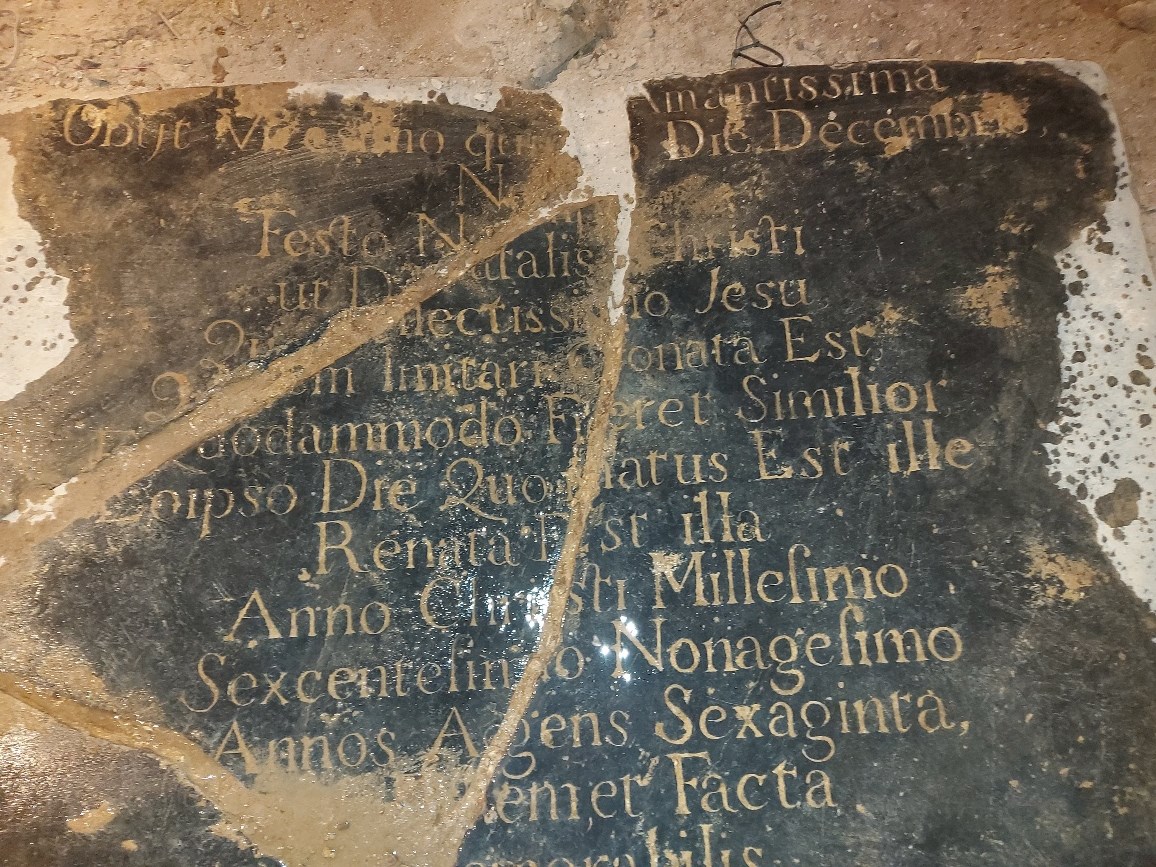Penelope Burgoyne's Tomb
 In March 2023, during the re-ordering of the Chancel, the tomb of Penelope Burgoyne was discovered. This is not the first time that work on the floor of the church has resulted in the discovery of a ‘lost’ memorial. In December 1995 the tomb of Rebecca Baker (nee Bullen), who died in 1775 was found in the south-east corner of the South Aisle when the flooring was taken up during restoration work. In January 1996 the grave of John Lee, who died in 1726 was discovered beneath the floor in the north aisle close to the chancel step.
In March 2023, during the re-ordering of the Chancel, the tomb of Penelope Burgoyne was discovered. This is not the first time that work on the floor of the church has resulted in the discovery of a ‘lost’ memorial. In December 1995 the tomb of Rebecca Baker (nee Bullen), who died in 1775 was found in the south-east corner of the South Aisle when the flooring was taken up during restoration work. In January 1996 the grave of John Lee, who died in 1726 was discovered beneath the floor in the north aisle close to the chancel step.
Unlike the two graves mentioned above, Penelope’s memorial was installed early enough in time to be seen by John Aubrey when he visited Woking during his travels in the late 17th century. It was most probably covered up by the Victorian restoration works of the 19th century. Fortunately, Aubrey recorded the Latin inscription on Penelope’s tomb in his book The Natural History and Antiquities of Surrey (1673-1692). This is just as well, as the grave was damaged when discovered and missing crucial elements of the inscription, such as her name!
What do we know about Penelope? Well, using the information given in her memorial inscription and local records, we know that she was born in 1630 and that at some later date married Johannis Burgoyne, who is recorded as living in an eight-hearth house (presumably a house with eight rooms) in Crastock in 1664. (Crastock Manor, also known as Bridley Manor, is in the extreme south-west of Woking Parish, in the area of Berry Lane near the modern Worplesdon Golf Club.) Penelope died on Christmas Day 1690 aged 60 and was buried on 6 January 1691.
These are the bare details of Penelope’s life-birth, marriage and death. Sadly, we will probably never know much more about her, but we do know that she lived during one of the most tumultuous periods of English history, the civil wars of 1642-1651 that began when she was a 12-year-old girl and ended when she was a young woman of 21 years. When Penelope was born England was ruled by an absolute monarchy, i.e. a King (Charles I) who ruled without Parliament and believed himself to be accountable to no one but God. During her long life, Penelope saw that king beheaded; England become a republic for the only time in its history, under Oliver Cromwell; another king (James II) try to turn the clock back to absolute monarchy, and finally in 1688 England become (under William III) what it is today, a parliamentary democracy and constitutional monarchy.
Penelope’s husband, Johannis, of course also lived through these testing times. He lived for over six years after the death of his wife and was buried on 8 June 1697. If Penelope’s memorial inscription is anything to go by, Johannis loved her deeply and revered her for her Christian faith and the good deeds that resulted from it. A particularly touching line from the inscription describes Penelope as being reborn in heaven on the anniversary of Christ’s birth on earth, evidence of a shared hope that for Christians, death is not the end but a gateway to new life in the presence of God.